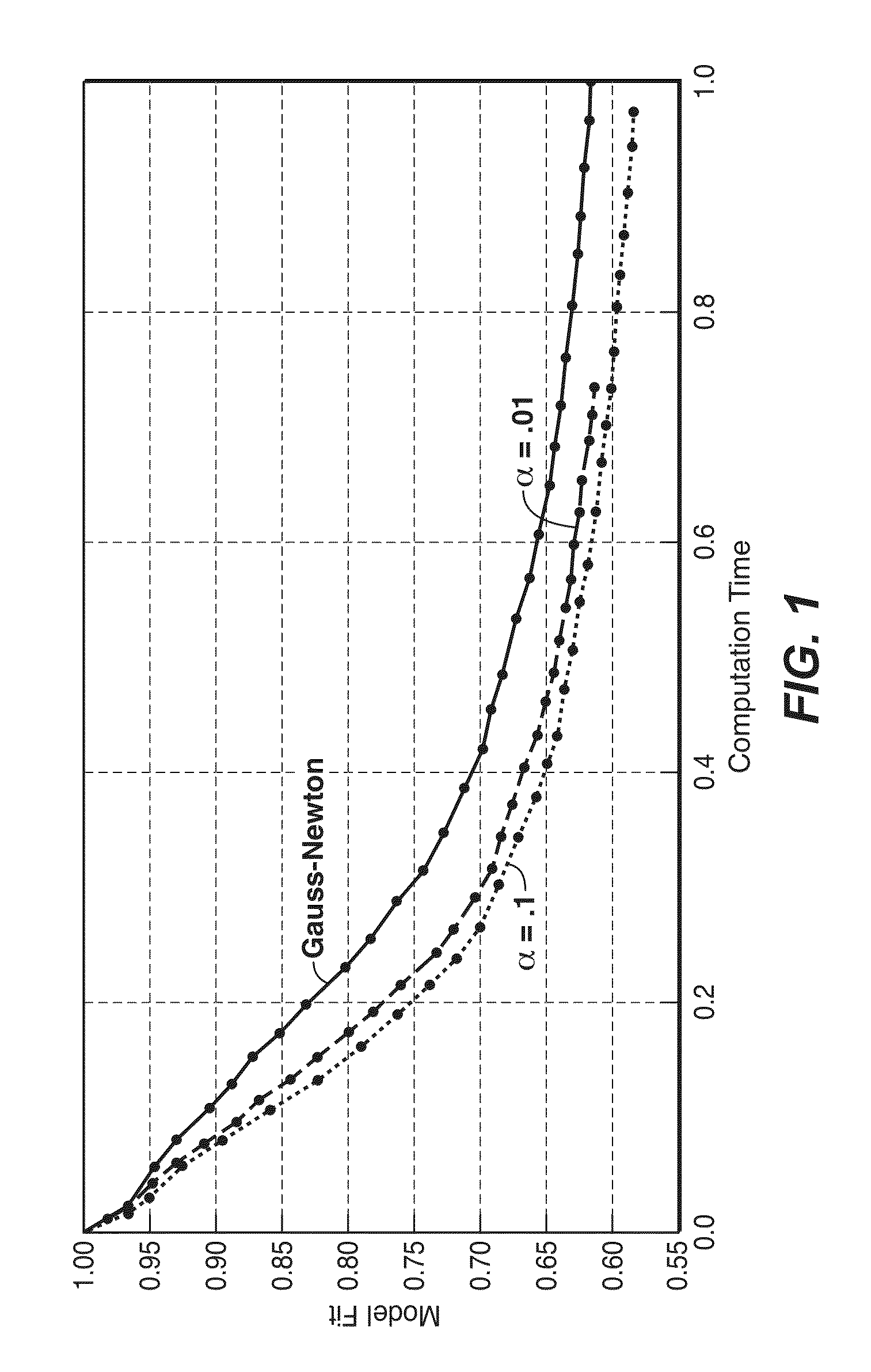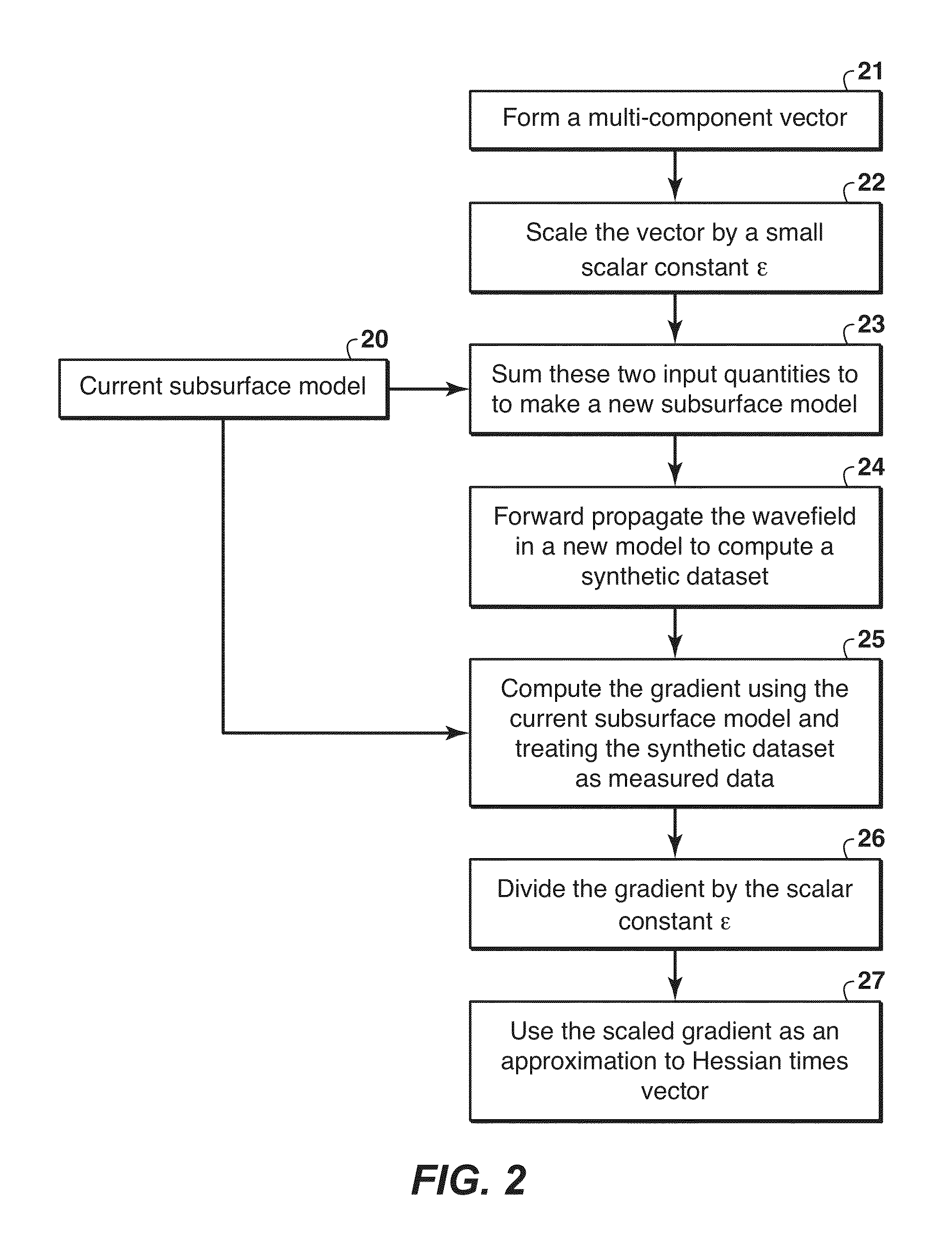Methods for Approximating Hessian Times Vector Operation in Full Wavefield Inversion
- Summary
- Abstract
- Description
- Claims
- Application Information
AI Technical Summary
Benefits of technology
Problems solved by technology
Method used
Image
Examples
example
[0024]For an illustrative example, we use the Marmousi II model [4] shown in FIG. 3A. This is the “true” model that was used to generate the synthetic data that was assumed to be the measured data for purposes of this example. The initial model for the full wavefield inversion is given in FIG. 3B. The inversion was performed by the encoded-simultaneous-source method described in Ref [2], which discusses the Marmousi II model and includes the two drawings reproduced here. The inversion result using the Newton's method as a function of computation time is shown in FIG. 1. The solid line is the result using Gauss-Newton Hessian, the dashed line is the result using the present invention where α=0.01 in equation (12), and the dotted line is the result using the present invention where α=0.1. In other words, the solid line uses the Gauss-Newton Hessian times vector in equation (8), with the inverse evaluated by the C-G method without benefit of the present invention, whereas the two broke...
PUM
 Login to View More
Login to View More Abstract
Description
Claims
Application Information
 Login to View More
Login to View More - R&D
- Intellectual Property
- Life Sciences
- Materials
- Tech Scout
- Unparalleled Data Quality
- Higher Quality Content
- 60% Fewer Hallucinations
Browse by: Latest US Patents, China's latest patents, Technical Efficacy Thesaurus, Application Domain, Technology Topic, Popular Technical Reports.
© 2025 PatSnap. All rights reserved.Legal|Privacy policy|Modern Slavery Act Transparency Statement|Sitemap|About US| Contact US: help@patsnap.com



